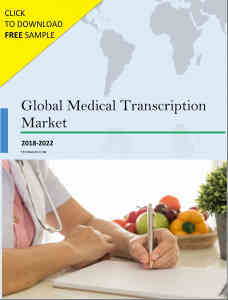In the past few years, there has been no dearth of innovations and technological developments in the healthcare sector. Today, every subset of the healthcare industry is recognizing the importance of information technology. Importantly, the ecosystem is prioritizing streamlined processes through digital platforms. In this digital era, where structured data and electronic records are valuable assets, medical transcription has emerged as a highly lucrative discipline under the healthcare banner.
 Demand and supply: Medical transcription is poised for success
Demand and supply: Medical transcription is poised for success
As more and more medical professionals and organizations subscribe to transcription, the demand for the associated tools and professionals is on the rise. Especially in recent years, the quest for accurate, complex and easily accessible patient information has led this discipline to evolve at an unprecedented rate. Indeed, there are many aspects of the regular healthcare process that rely on transcription to deliver the best results.
Additionally, medical transcription is one of the few mainstream segments to fully embrace new technologies and infrastructure. Further, the need to maintain electronic health records (EHRs) is one of the more significant drivers propelling the growth of the medical transcription industry.
Growth powered by breakthrough technologies
Medical transcription has become a multi-billion-dollar industry and is undergoing significant operational changes. Although it has been part of the healthcare sector for a long time, the continuing innovation and development of transcription-related technologies is significantly changing the way this works. Healthcare-affiliated institutions have no choice but to adopt these new technologies in order to remain relevant.
These cutting-edge advancements and innovations are expected to strongly influence the medical transcription segment in 2018. Firstly, the analog devices that have long been used by physicians are expected to be replaced by high-end digital devices. Further, as cloud-based technologies evolve, the medical transcription sector is also expected to embrace cloud-based systems for storing and accessing data.
In addition to that, one of the most significant changes will be the usage of advanced communication methodologies for better and faster transfer of updates between medical transcriptionists and healthcare professionals. This will speed up the process and the turnaround times will reduce significantly.
Investment magnet: Speech recognition is THE front line technology
Gone are the days when physicians used to speak into dictation machines and medical transcriptionists (MTs) had to take these recordings and turn them into text. As technology evolves, the medical transcription sector has seamlessly moved toward computer-based speech recognition software technology such as Nuance Dragon. Speech recognition software helps MTs by reducing the turnaround times and converting the audio through an automated voice-to-text conversion method.
Companies such as MModal, iMedX, and Nuance have already adopted this technology as it helps in cutting down the operational time and transcription costs significantly. As technology continues to evolve and computer software becomes more adept in its ability to recognize speech content with accuracy and precision, the time spent by medical transcription professionals on the product reduces, thereby saving companies’ money and editors’ time.



